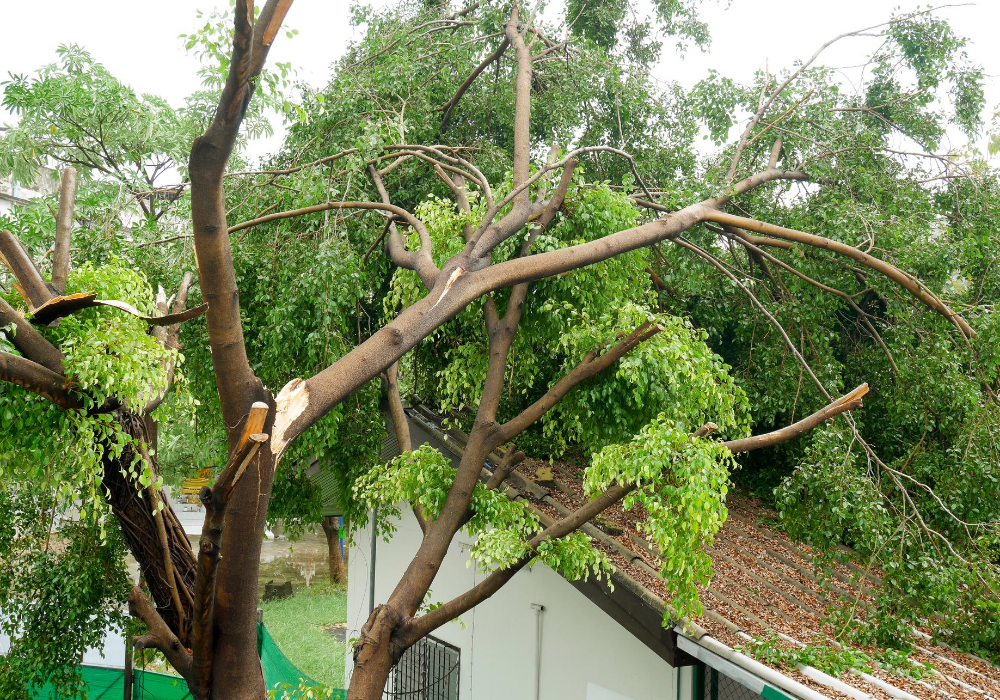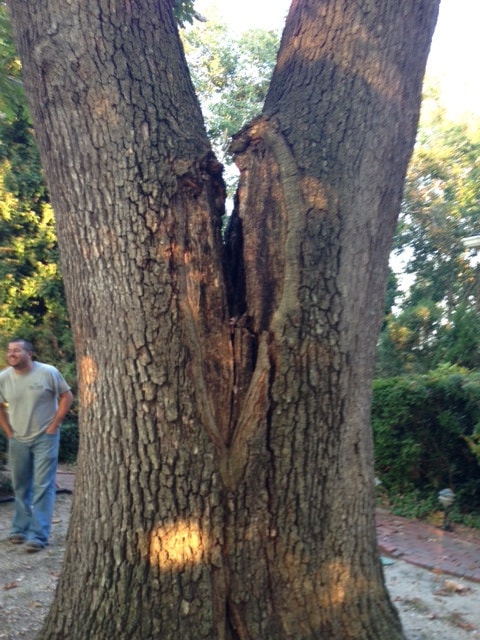The short answer – yes. But depending on the size of the tree, severity of the split, and type of tree, it could get complicated. Nelson Tree Specialist has been helping the people in the DMV region deal with this for years. We have a dedicated team who are ISA Certified to deal with split limbs of all sizes. Here’s what they have to say.

How to Recover Split Limb
Hopefully, your split is not a life or death situation. There are number of ways a tree can split, each resulting in unique recovery efforts.
As long as the cambium, the soft tissue responsible for carrying nutrients throughout the tree, of both broken parts remains in contact with each other, it will heal. Just like the human body, trees can heal themselves.
For trees with more severe splits, some triage may be necessary. To start up the healing process, you have to put the branch back together so that the broken cambium can be in contact again. This process is called grafting.
Grafting for Smaller Split Limbs
Smaller branches are the easiest to graft. All you need is a bit of grafting tape or a strong cord. Connect the branches, making sure that the cambium is in contact again. Then wrap strongly with a grafting tape or cord.
Within a few months, the broken branch should be healed.
Grafting for Larger Split Limbs
A grafting tape or cord alone might not cut it for larger branches because the branch is too heavy to carry its weight.
In that case, you’ll need a splint. A splint is a support made of two supports tied together to form a fork. The newly grafted branch rests on the splint, using it as a crutch until the branch fuses and can carry its weight.
Remove the splint after a year so the healed branch can grow without any distractions.
If you don’t use a splint, you can use a nearby branch to hold it up. But be careful to only use very strong branches to support the broken branch, or both would break.
Grafting for Very Large Branches

For this, you’ll need more than a splint; you’ll need to get bolts and cables. Most often than not, a professional takes care of such large branches.
Grafting the broken branches is the first step you have to take. Post-grafting care is second. You might hear many things about post grafting practices, but the most important one is observation.
You can’t figure out what the healing branch needs if you don’t observe it. Visit the spot and lookout for signs that the branches aren’t getting enough nutrients.
All other post-grafting practices come after observation. Whatever you discover would determine which one to use.
Broken branches can heal. They just require a little help from us to get better. Contact Nelson Tree Specialist, your local certified arborists, to assess and treat your split tree
